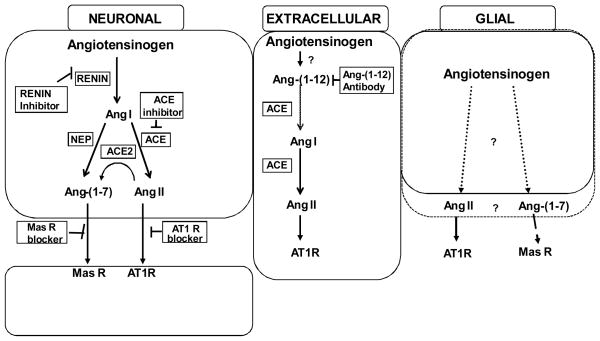Fig 1.
Summary of various pathways and sources hypothesized to exist for the generation of Ang peptides. From left to right - An intracellular, renin-dependent pathway is well documented in paraventricular nucleus, nucleus of the solitary tract and rostroventrolateral medulla, that may mediate formation of both angiotensin (Ang) II and Ang-(1–7) involved in stress responses and regulation of arterial pressure. Ang-(1–12) is thought to be extracellular, contributing to hypertension and impairment of Baroreflex function in (mRen2)27 rats, but may not play a role in normal animals. Angiotensinogen of glial origin is the predominant source of the precursor protein in brain (~90%), but whether angiotensin peptide processing represents an intracellular or extracellular event is not known. ACE, angiotensin converting enzyme; ACE2, angiotensin converting enzyme 2; NEP, neprilysin; AT1, Ang II type 1 receptor; Mas, Ang-(1–7) receptor.

